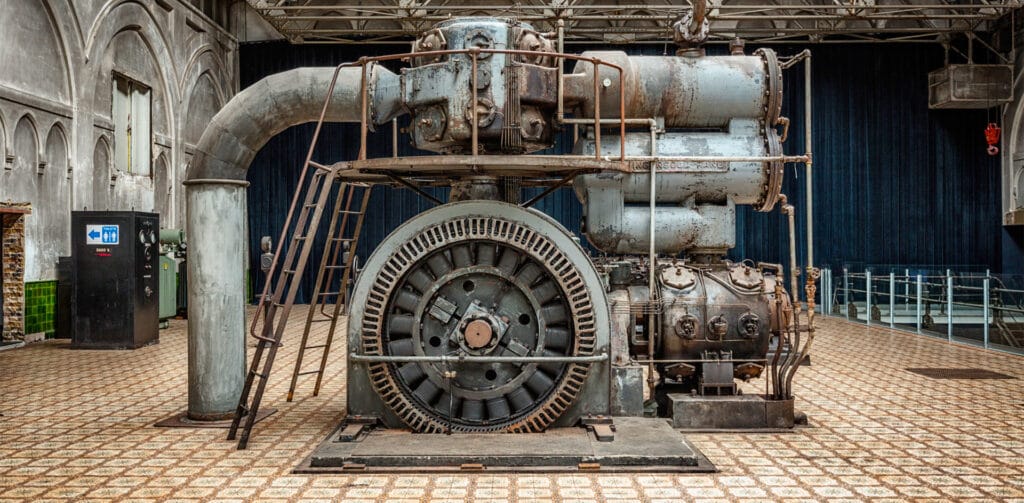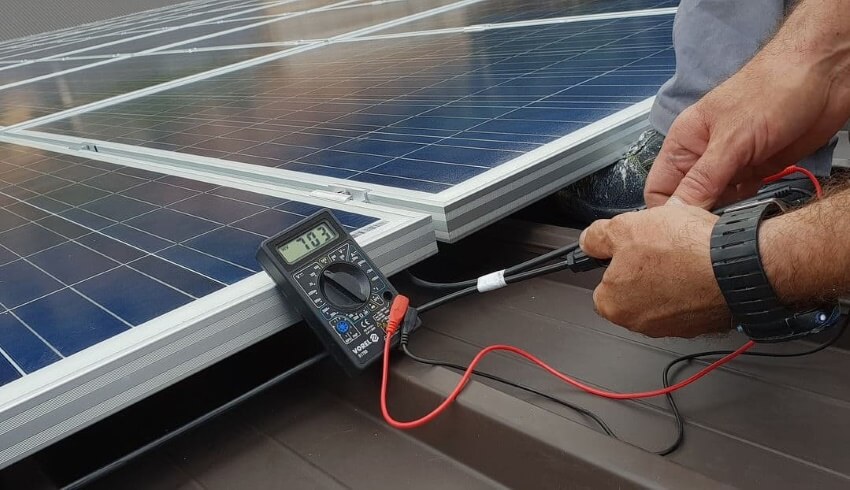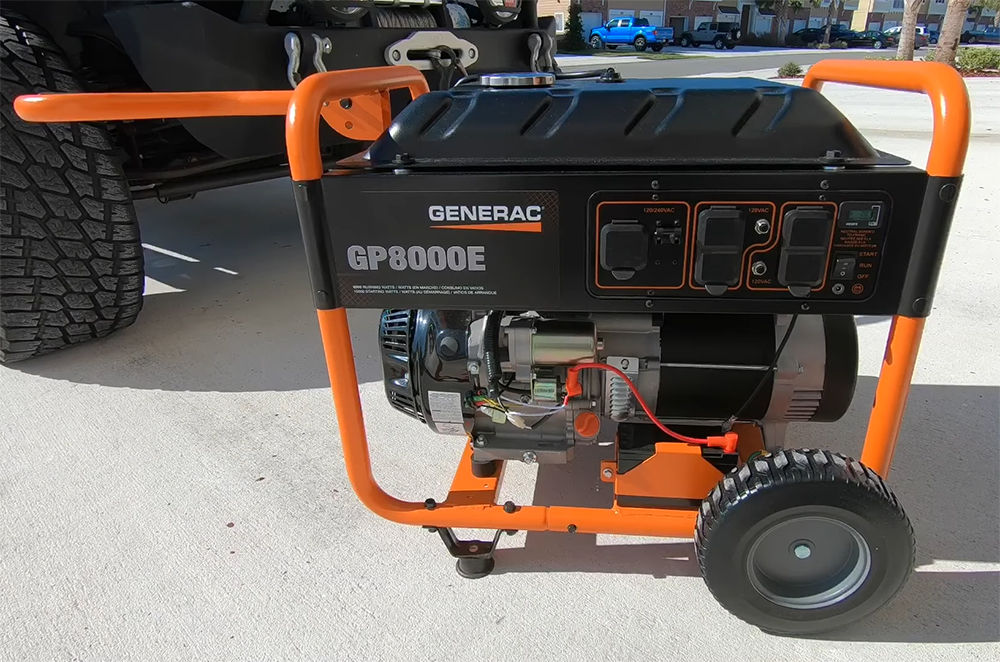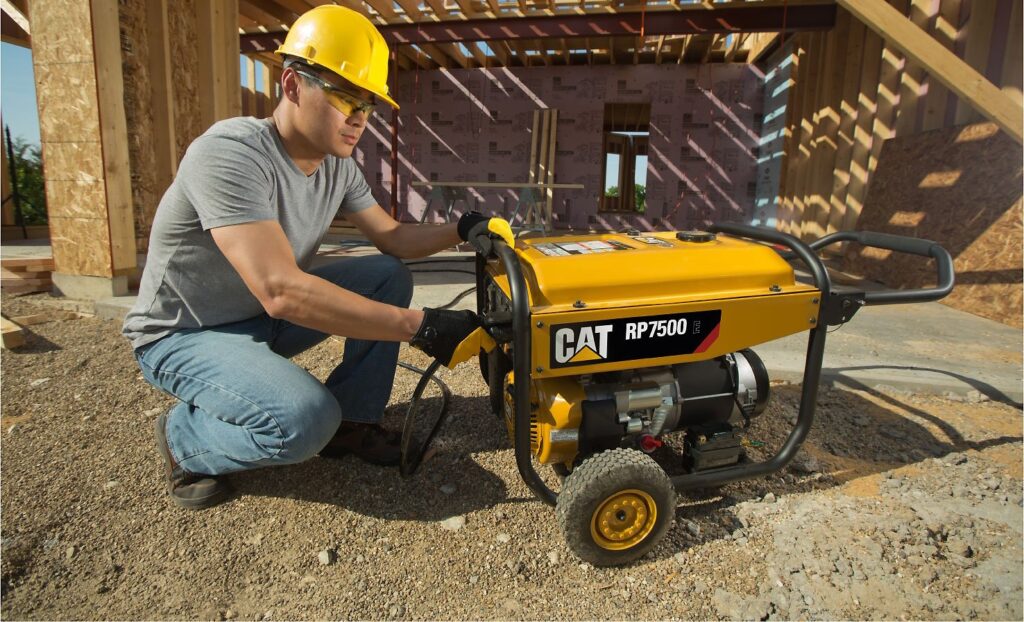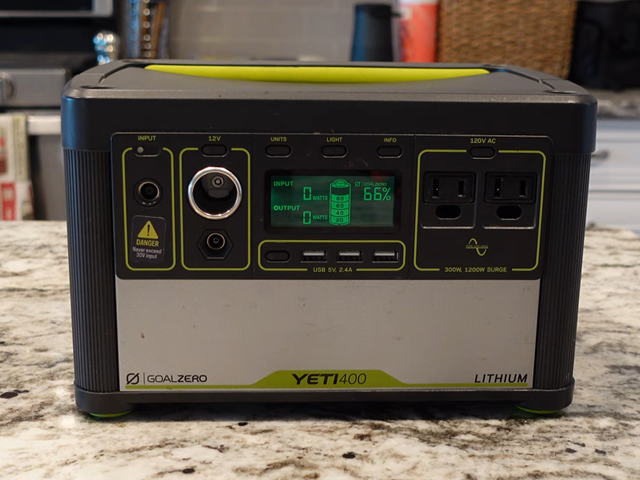
A technological revolution has quietly been taking place in the world of portable generators. A new class of generators, known as inverter generators, convert the AC power produced by the engine to DC power, then back to AC power. The result is clean, low-distortion power that can be used for charging sensitive electronics, as well as excellent fuel efficiency, low engine noise levels, and less maintenance compared to traditional generators.
In order to help you find the best inverter generator, we considered a number of features of these machines. First, we looked at the continuous and surge power ratings of different inverter generators, since just as for traditional generators this determines what you can power. We also looked at whether different generators run on gasoline, propane, or either, and how long generators can run on a single tank of gas or propane. Finally, we considered how loud different inverter generators are, since low noise is a major selling point of this class of generators.
We spent tens of hours researching inverter generators, poring over customer reviews and technical specifications. The result is our list of the ten best inverter generators, highlighted in the table below. Continue reading for detailed reviews of each generator, complete with pros and cons. Our buying guide covers everything you need to know in order to choose the right inverter generator for your needs. Finally, we sum up our three overall favorite inverter generators on the market today.
This 3000-watt inverter generator from Firman is the ideal companion for a medium-sized RV thanks to its power output, portability, and range of outlets. The generator features a sizable Max Pro Series 171cc Firman Engine that is impressively fuel efficient even when running at higher loads. The engine is capable of producing up to 3,300 watts of surge power or 3,000 watts of continuous power, which is more than enough to power all of the appliances in most RVs and still have power leftover.
The fuel tank is somewhat large at 1.8 gallons, which contributes to the overall bulk of this generator. However, it also allows the generator to offer a 9-hour runtime at 25% load, which is significantly better than many other inverter generators that are limited in how long they can operate on a single tank.
The generator weighs in at 90 pounds, which can make it somewhat heavy to transport around or move in and out of an RV. However, it does have a pair of small wheels that work well on relatively flat surfaces like around a campground. The generator panel includes an RV-ready twist-lock outlet to make plugging in your RV simple, and there is even one USB charging ports for small electronics.
The noise output of this generator is moderate, is about 58 dB depending on the amount of power you are drawing. While this can be a bit much for a campsite at night, it is significantly quieter than any comparable conventional generator, and you will have to spend a lot more to find a comparable generator that produces less noise.
This 2,000-watt generator from Honda handily beats out the competition for anyone looking for the absolute quietest inverter generator on the market. The Honda EU2200i produces just 48 dB of noise – about the same noise level as a loud conversation – when running at low power outputs and rises to a maximum of just 57 dB – the minimum noise level on many other generators we reviewed.
Despite how quiet this generator is, it delivers well on power. The generator offers up to 2,200 watts of surge power and 1,800 watts of continuous power. Users note that the 121cc Honda GXR120 engine lives up to the hype around Honda engines when it comes to reliability, and Honda provides a lengthy three-year warranty on the engine as well.
Where this inverter generator does suffer is in runtime. The generator is not the most fuel efficient of models and has a surprisingly tiny 0.95-gallon tank, which together limit the generator to a runtime of just 8.1 hours at a 25% load. That means that if you want to run the generator anywhere near its power capacity, you’ll only get a few hours of use before having to turn it off, wait for it to cool down, and add more fuel.
The other big drawback to this generator is the price. At well over $1,000, this is the most expensive inverter generator we reviewed. However, users will tell you that the reliable Honda engine, extraordinarily quiet operation, and long warranty is well worth the price.
Warranty: 3-year limited
The Champion Power Equipment 200988 is a high-quality inverter generator that can be used with propane or gasoline. When gas powered, it can reach peak wattage of 4500w, while propane powered offers 3150 watts. This should be more than sufficient to run an air conditioner or keep a sump pump running in your basement in flood conditions. The unit has a 2.3-gallon fuel capacity, which provides up to 14 hours of run time with gasoline and the 20-pound tank provides up to 21 hours of run time with propane.
The Champion 200988 has a conventional pull start mechanism, but there is also an easy to use, convenient electric starter with battery included. This lets you start the engine easily without needing to exert all your effort with a pull start. This provides clean power for up to two 12-volt household outlets, operating at just 61 dBA, which makes it ideal for tailgating, RVs or as backup power for your home during an emergency. The unit is supported by a three-year limited warranty that includes free lifetime technical support. The kit includes propane hose, engine oil, spark plug wrench, oil funnel, reversible flathead Phillips screwdriver and USB adapter.
Warranty: 2-year limited
For those looking for an inverter generator for boat use, the WEN 56200i fits the bill. This is due to the fairly lightweight design, reliable power, and quiet operation. That said, it does fit other uses as well, including tailgating, construction sites, and even at home during a power outage. The 79.7 cc 4-stroke OHV engine is responsible for the power output of the generator, which peaks at 2000 watts. However, the running wattage is 1600 watts.
One of the more attractive generator attributes of the 56200i is that it is EPA III and CARB compliant. This, of course, means that it produces low emissions, making it a better alternative for those keen on environmental conservation.
Additionally, it limits total harmonic distortion in its outlets which include two 120-V receptacles, one 12V-DC option, and one USB port. Consequently, there shouldn’t be any issues connecting this generator with your sensitive electronics, whether smartphones, laptops, or tablets. Also, given the power requirements of such gadgets, the generator should run for close to nine hours. After all, nine hours is the expected runtime at ¼ load.
In our opinion, the included outlets are more than enough for most needs, especially if you’re on a boat. You likely won’t even have a lot of devices plugged in. We also liked that you can link two of these generators if you need to double the power.
This powerful inverter generator from Champion boasts the highest maximum wattage of any generator we’ve reviewed, at 4,000 watts. The continuous power output isn’t far behind at 3,500 watts, making this the generator of choice when you want to reap the benefits of an inverter generator without giving up on the high power output found on comparable conventional generators.
Unlike most of the other inverter generators we reviewed, this generator is not designed with portability in mind at all. The generator weighs 81 pounds and does not have a set of wheels, so you’ll either have to buy the wheel kit separately, or you’ll need two people two carry it by the handles on the steel frame.
The runtime on this generator is impressive given the power – 17 hours at a 25% load – thanks to the extended runtime feature built into the generator. However, while that feature helps with fuel efficiency, the real secret behind the long runtime is the 2.9-gallon fuel tank. So, you should expect to put extra money into fuel for this generator compared to other inverter generator models.
Given its power output, the 64 dB noise rating on this generator is extraordinary, especially when compared to conventional generators with a similar output. RV owners will be glad to find that this generator comes with an RV-ready twist-lock outlet, although storing the generator on a small- to moderate-sized RV can be problematic. That said, the power output and RV outlet make this a terrific choice for larger RV’s where the low noise level sets this generator apart from the competition.
If you want a portable inverter generator, then you should strongly consider buying one of these from the Westinghouse brand. This brand is popular for the superb generators and similar products that it makes. The Westinghouse iGen220 is a portable model that has a variety of features that makes it a good choice for anyone looking for an alternative source of power.
As with most portable models, this generator is easy to start with a single pull. It isn’t electric start model, but that doesn’t affect how easy it is to start.
The design is simple, although it doesn’t look like the most durable product available. Part of what we loved about the design is that addition of a control panel. This is easy to use as all the buttons, outlets, and knobs are easy to identify and use. There are also quick controls that allow you get the settings that you want quickly.
When buying a generator, one important factor to keep in mind is the noise level. Many models on the market have a noise level of between 70 to 78 decibels. Impressively, this model has a noise level of just 52 decibels. Therefore, it is a very quiet option.
This unit also has a fuel capacity of 1.2 gallons, and at quarter load, it will run for up to 12 hours. As if that weren’t cool enough, there is an Efficiency Mode that ensures the machine runs at the maximum efficiency.
This inverter generator from Generac is ideal for applications where portability is at a premium and power demands are modest. The generator has a small 80cc OHV engine that produces a maximum of 2,200 watts and can continuously output 1,700 watts. While that might be enough for the needs of a field site or medium-sized RV, it’s important to recognize that this will also mean you will be frequently running the generator near its rated power.
That is particularly a problem for the runtime of this generator, which is limited by the inefficiency of the engine at higher outputs and the limited 1.2-gallon fuel tank. The generator runs for just 10.75 hours at a 25% load, similar to the Westinghouse generator, and so may be limited to just a few hours of runtime in many applications.
That said, the panel of this generator is nicely equipped with a pair of 120V outlets, a single USB charging port, and a 12V DC outlet for charging batteries. All outlets are grounded and can be quickly and easily reset in case of a surge. In addition, the generator is lightweight, at just 47 pounds, making it easy to transport wherever you need it. While the noise level of this generator is not rated, users found that it was comparable to competing inverter generators in the same power range, making it a quiet generator.
The warranty on this generator is somewhat short compared to competitors, at just two years for residential users and one year for commercial users.
This inexpensive inverter generator from Pulsar is an ideal choice for anyone on a budget who still wants the benefits of an inverter generator. Of course, that lower price comes in part because the engine of this generator is smaller than other inverter generators – the 80cc four-stroke OHV engine is capable of producing a maximum of 2,300 watts of surge power and 1,800 watts of continuous power.
However, don’t let the modest power output and price distract you from the performance of this inverter generator. The 1.2-gallon tank and efficient engine allows this generator to operate for up to six hours at a 50% load. The 59 dB noise level is somewhat high given the small size of this generator, but is still not so loud as to be problematic. The design of the generator is compact, and it weighs in at just 47 pounds, so it should be easy for a single person to carry this generator around.
The generator panel has everything you need for everyday use, including a pair of 120V three-pronged outlets, a 12V DC outlet for charging batteries, and a USB port for charging small electronics. The only other reflection of the modest price of this generator is the warranty period, which is limited to just one year regardless of whether you are a recreational or commercial user.
Warranty: 2-year
The PowerSmart PS5020 is one of the more lightweight options on the market. A 2500-watt generator, this is a good option for use on camping trips or do a decent job in a power outage.
The overall power of 2500 watts is decent, but this is the surge power. Keep in mind that there’s 1900 watts of rated power, so this is less than some of the other options on the list.
It has a smart design, with the muffler design keeping the volume down, and a 40lb weight making it really easy to carry around. Even if you aren’t the strongest person in the world, this is easy enough to set up and assemble.
It doesn’t have a huge fuel tank and this means you can expect to get around 7 hours of runtime out of the generator at a 50% load. This is the price you pay for a lightweight generator, and is not uncommon when you consider the design.
Your connection options include 120V rated voltage socket, 2 5V USB ports and 12V DC output for simple use and to ensure all of your appliances and devices are protected, and the generator comes with a 2-year warranty so you can rest assured that you’re covered if it gives up on you.
This generator boasts a 2300 Peak Watt or 1900 Running Watt power, with a GENKINS industrial class engine that is built to last. The 1.36-gallon tank is somewhere in the midrange when it comes to portable generators, but holds enough fuel to give you around 8 hours of runtime when using 50% of the capacity of power.
The generator is pretty quiet, too. Though it is rated as 53-56 dB, this is measured from a closer distance than some of the other options, so it may actually be pretty quiet.
It weighs 48 lbs, so that’s a really reasonable weight to be carried around no matter what sort of shape you are in, and you probably won’t need tools to get it from one place to the next.
The safety features are impressive, and there’s an automatic shutdown when the oil levels are low, so you won’t risk doing damage to the generator due to lacking oil. The fuel gauge also makes it easy to see your levels of gasoline and when you might need to top it up.
Make sure you break in the unit before using it for the first time for the sake of safety and to ensure all is functioning as required.
Now that you’ve learned more about our eight favorite inverter generators on the market today, how do you choose between them to find the generator that’s right for you? And why might it be worth spending extra money on an inverter generator instead of opting for a conventional generator? Our buying guide will answer these questions and cover everything you need to know about finding the right inverter generator for your needs.
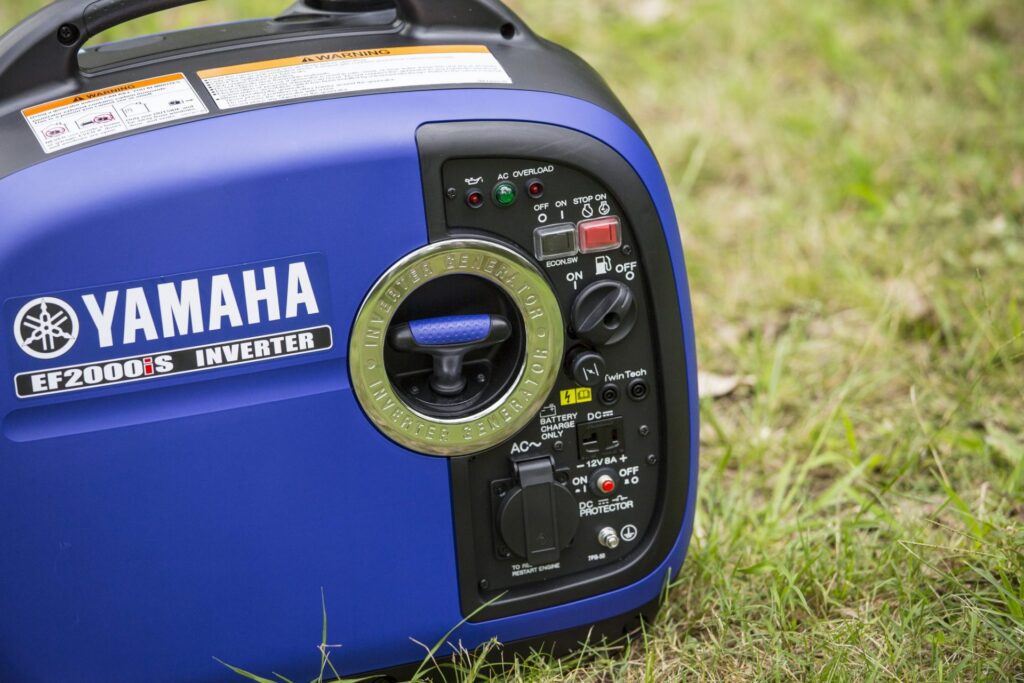
Why go through all this work? One of the biggest reasons is that converting AC power to DC and back cleans the electrical current, smoothing out the energy so that there is far less distortion. Basically, this means that the electricity coming from an inverter generator is less likely to cause miniature power surges that could damage your sensitive electronics, such as computers and smartphones. Conventional generators, on the other hand, produce “dirty” AC electricity that is only suitable for heftier circuits like those found in appliances and power tools.
Inverter generators also offer a number of other benefits over conventional generators.
Inverter generators are typically built with engines that are the fraction of the size that is needed in a conventional generator to produce the same amount of power. That means that inverter generators can be extremely compact and lightweight for portability and storage, but still pack the electric punch you need to power all your stuff.
On top of that, smaller, more efficient engines allow you to spend less on fuel to power your generator, but if you need even more eco-friendly model then you should check solar generators. You’ll also get longer runtimes for the same amount of fuel, although the exact runtime of an inverter generator compared to a conventional generator also depends on the size of the fuel tank – because inverter generators are compact, they often have fuel tanks only a few gallons in volume.
Another major advantage that converts many users to opting for an inverter generator over a conventional generator is that inverter generators are comparatively quiet. Inverter generators can be as quiet as 48 dB like on the Honda generator, which is considered to be one of the best Honda gens, and nearly all of the inverter generators we reviewed are less than 60 dB. Compare that to noise levels typically well over 60 dB for conventional generators, and it’s easy to see why inverter generators can be preferred in many situations.
With all those advantages in mind, there are a few drawbacks to inverter generators. Inverter generators are almost always more expensive than conventional generators in the same size class because of the newer technology they offer. More concerning, inverter generators can be much more difficult and costly to repair than conventional generators because of the complexity of the microprocessors coupled with the engine.
In addition, inverter generators are often limited in the amount of power that the most heavy-duty models can offer – for example, the most powerful inverter generator we reviewed, the Champion Power Equipment 200988, maxes out at 4,500 watts of power. On the other hand, portable conventional generators with maximum outputs well above 10,000 watts are available. That said, multiple inverter generators can be hooked up in parallel to increase your total available power, which is something that you cannot do with conventional generators.
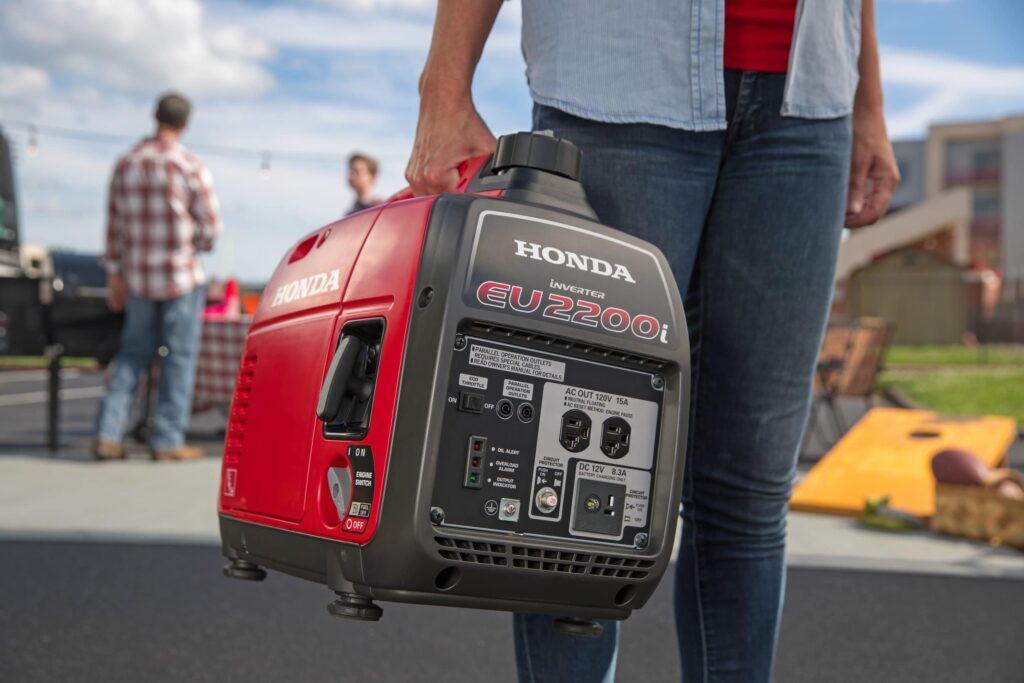
The simplest way to figure out how much power you need is to add up the wattage requirements of everything you want to power. This sum needs to be less than the rated running wattage of the generator, and typically it’s a good idea to leave yourself some breathing room. When in doubt, there are a number of online calculators that can help you estimate how much power common appliances draw.
Remember to leave some extra power for charging electronics as well, since this is a possibility with your inverter generator.
Most inverter generators are limited in the amount of power they supply – the most powerful generator we reviewed, the Champion Power Equipment 200988, offers a maximum of 4,500 watts of surge power and 3,150 watts of running power, and is also considered to be one of the best Champion generators. However, keep in mind that if you need more power than any single inverter generator can offer, you can hook up two inverter generators in parallel using an after-marker parallel connection kit to effectively double your power.
Adding more fuel to your generator can be a time-consuming process, as you need to wait for the generator to fully cool down before you can top off the tank. Thus, runtime is an important consideration if you don’t want to lose power halfway through the project that you’re using the generator for.
The runtime of an inverter generator is typically measured at 25% or 50% load, and decreases as more power is drawn from the generator. Runtime is determined by a combination of the fuel efficiency of the engine and the capacity of the fuel tank (if you’re running on gasoline), which can vary widely between generator models. For example, the Honda EU2200i runs for just 9 hours at 25% load because of its small 0.95-gallon fuel tank, while the Champion Power Equipment 100302l has a 2.9-gallon tank and can run for 17 hours at a 25% load.
Generators that can run on either gasoline or propane, like the Champion Power Equipment 200988, may have longer or shorter rated runtimes on propane compared to gasoline depending on the size of the internal fuel reservoir. However, using propane also allows you to extend the runtime dramatically because you can buy a larger propane canister. You can also use a valve to connect two or more propane tanks to your generator, switching between them as one is exhausted so there is no downtime.
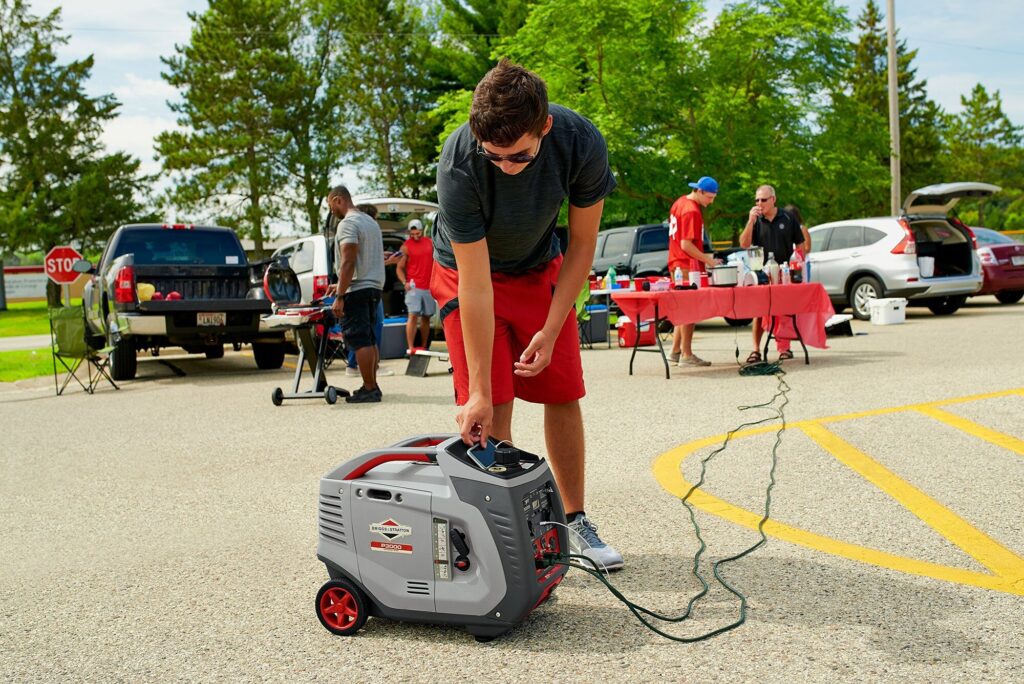
The reason that inverter generators are able to be so quiet is that they can actually modulate the amount of work the engine is doing in response to how much power you are drawing from the generator.
Thus, a generator like the model from Honda can scale from just 48 dB of noise at a low power draw to up to 57 dB of noise at maximum power. Inverter generator noise levels also vary a lot from model to model – while the Honda has a minimum noise level of 48 dB, the model from Firman has a minimum noise level of 58 dB.
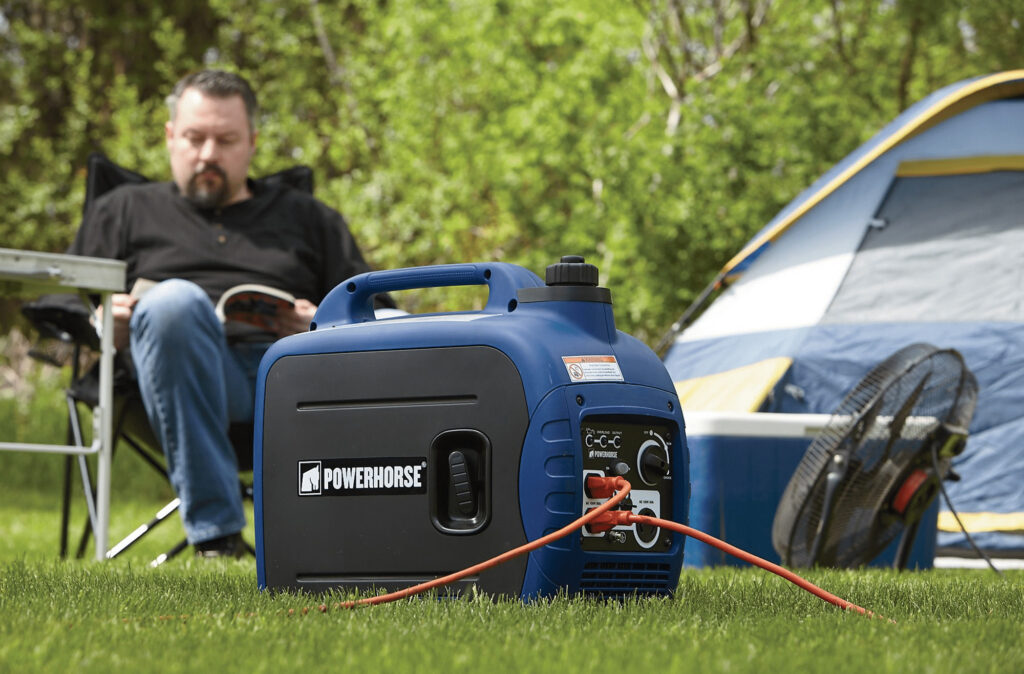
One major safety feature that most inverter generators have, and most conventional portable generators don’t, is an enclosed engine. This is partly to help reduce engine noise and protect the engine parts from damage during transport, but it also ensures that you can’t burn yourself on any hot exposed engine components.
Another important safety feature that all of the inverter generators we reviewed have is an automatic low-oil shutoff. This shutoff detects whenever the engine oil is dangerously low and powers down the generator before the lack of oil can do any costly and sometimes irreversible damage to the engine as well as cause power surges.
All of the generators we reviewed also have overload prevention built-in. That means that if you exceed the generator’s running capacity (or surge capacity when a motor-driven appliance is starting up), the generator will automatically shut down in order to prevent a power surge or damage to the engine.
It’s extremely important to maintain your generator and use it properly in order to keep it running for years to come. Perhaps the most important thing you can do is to ensure the engine is properly oiled, since running low on oil can cause serious engine damage. You should change the oil every 50–100 hours, and possibly even more frequently if you use the generator in dusty conditions or at its maximum power output.
Another important safety tip is that you need to allow the engine to fully cool down before adding gasoline to the fuel tank. Adding fuel to a hot generator is a safety hazard that can present a danger to you as well as potentially cause damage to the engine.
Inverter generators typically cost significantly more than conventional generators in the same size class, but the cost of different inverter generator models can vary quite a lot. For example, the budget-priced model from Pulsar costs less than $400, while the expensive Honda generator is over $1,000. In general, expect to spend between $500 and $900 for a quality inverter generator.
Our three overall favorite inverter generators on the market today are the Firman W03083, the Honda EU2200i, and the Champion Power Equipment 200988. The Champion generator is set apart from the competition in that it is one of only a limited number of dual-fuel inverter generator models, meaning that it can run on either gasoline or propane. The ability to run on propane makes it a great choice for saving it for a power outage at home. The Honda generator is the quietest inverter generator we reviewed and offers incredibly reliable performance thanks to the Honda engine, but that brand name does come at a significant price premium. We feel the Firman W03083 is the overall best inverter generator on the market today thanks to its impressive combination of power, portability, price, and quiet operation. Plus, the Firman generator comes with a 3-year warranty so you can be confident that you’ll be using the generator for years to come. And please keep in mind that inverter generators are also being made by other respectable manufactures, like for example Lifan generators, have lots to offer, so if you would like to extend the comparison in order to make the best choice, you are most welcome.
